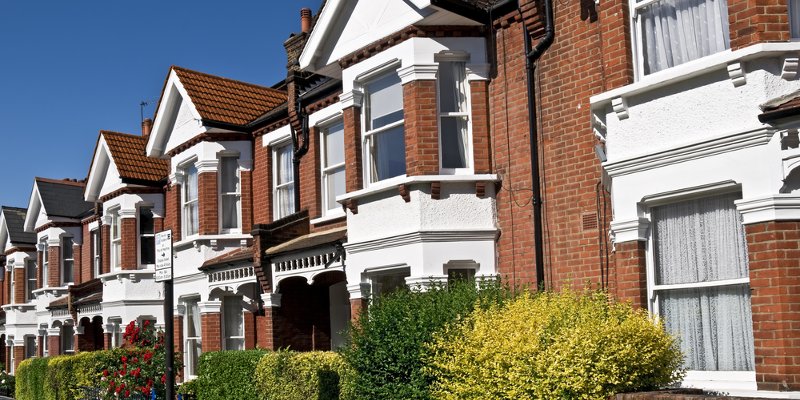The data from the lender also shows that there has been some convergence in terms of regional price growth with the gap between the weakest and strongest markets at its narrowest since 1978.

House price growth in the UK slowed in March with the latest index figures showing that values fell by 0.3% and annual growth was down to 3.5% taking the average price to £207,308, according to Nationwide.
The data from the lender also shows that there has been some convergence in terms of regional price growth with the gap between the weakest and strongest markets at its narrowest since 1978.
It also shows a mixed price across the country in the first three months of the year with the quarterly figures showing that six regions saw prices rise, six saw them fall and there was no change in the East Midlands.
"The spread in the annual rate of change between the weakest and strongest performing regions was at its narrowest since 1978 at 6.8%, the second smallest gap on record," said Robert Gardner, Nationwide’s chief economist.
"The South of England continued to see slightly stronger price growth than the North of England, but there was a further narrowing in the differential. Northern Ireland saw a slight pickup in annual house price growth, while conditions remained relatively subdued in Scotland and Wales," he added.
The quarterly figures, which differ from the monthly index, show that overall year-on-year prices increased by 4.1% while in England they increased by 4.7%, in Northern Ireland by 3.8%, in Scotland by 2.9% and in Wales they were up by 1.2%.
The East Anglia and Outer Metropolitan regions saw a marked slowing in annual price growth compared with the fourth quarter of 2016. Prices in the South West, Outer South East, Outer Metropolitan, London and East Anglia were up 5% year on year, whilst in the West Midlands, East Midlands, Yorkshire and Humberside, the North West and the North, prices rose by 3.8%.
While regional growth rates have begun to converge, there remain significant disparities in price levels. This is particularly apparent when looking at prices relative to their 2007 peak. For example, prices in London are nearly 60% above 2007 levels, while those in the North, Yorkshire and Humberside and the North West are still lower than their 2007 peaks.
But experts believe that the March dip is not a profound trend and monthly figures can be volatile. They also pointed out that it has nothing to do with the beginning this week of the process of the UK leaving the European Union as the figures are gathered beforehand. Also the figures relate to Nationwide customers and are not a complete picture.
Jonathan Hopper, managing director of Garrington Property Finders, pointed out that while it is nearly two years since the month on month number was last in negative territory, the fall in house prices was symptomatic of a listless market rather than a shift.
"The market has become a muddled mix of extremes, with double digit reductions going on at one end of the spectrum and gazumping at the other. So it would be overly melodramatic to view the Nationwide’s latest data as a turning point. In reality, average house prices have been meandering for several months against the volatile and uncertain economic backdrop," he said.
"Buyer intent remains strong in many parts of the UK, but buyers have become acutely price sensitive. No one wants to buy a home only to realise they could have got it cheaper if they had waited so on the front line, prospective buyers are scrutinising prices harder than ever," he explained.
"Although Britain’s economic fundamentals remain robust, the Bank of England is clearly wrestling with the question of when, not if, to raise interest rates. Rapidly rising consumer inflation and a gentle erosion in confidence are likely to leave the property market increasingly rudderless in coming months. Average prices will continue to creep up, albeit at a subdued pace as house price to earnings ratios begin to bite in many parts of the country," he added.
Sundeep Lakhtaria, director at residential financier Urban Exposure, believes that the housing market is still facing pressures in the buy to let sector as well as from a lack of real wage growth for consumers. "However, the economic backdrop remains fairly robust with February’s PMI figures pointing to GDP growth of 0.4% or 0.5% in the first quarter, unemployment at a record low and a continuing low interest rate environment for the foreseeable future," he pointed out.
"As such we may expect to see some gentle house price growth over the coming months. Ultimately it is important to remember that year on year comparisons for house price growth will be difficult over the next few months due to the market distortions created in the rush to transact prior to stamp duty changes," he added.



